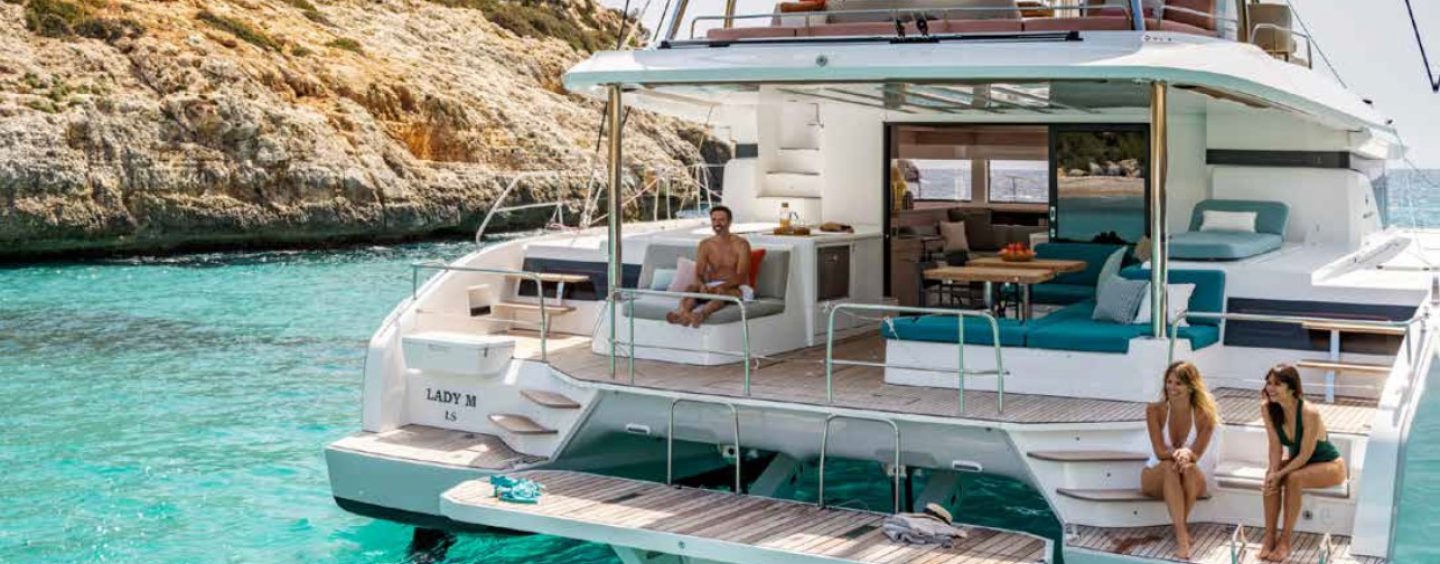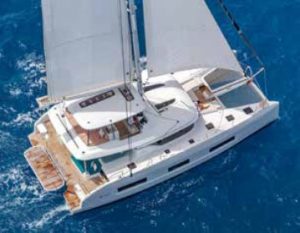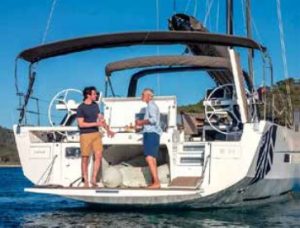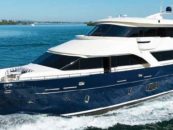by Andy Kancachian
Sailing is a timeless activity that spans generations, offering enjoyment from early childhood to well into your senior years. Few other pursuits grant this lifelong engagement. With the wind as your ally, sailing becomes a cost-free endeavour once you’ve acquired a sailboat. The exhilaration of sailing surpasses that of operating a powerboat. All you need to do is buy the right yacht to match your ambitions.
SELECTING THE RIGHT BOAT: TYPE, SIZE, AND COST –
When contemplating sailboat options for Broadwater/Moreton Bay sailing, the best choices are inshore sailing dinghies, keel yachts or catamarans. For those drawn to offshore adventures, experts generally recommend yachts over 30 or 35 feet, although remarkable feats have been achieved in small vessels. Yachts in the 45-55ft range provide smoother rides, gliding over waves with reduced vertical motion. What truly matters is opting for a yacht design with a moderately high ballast/displacement ratio, indicative of hull stability and resistance to capsizing. The mono vs. multihull debate carries its own pros and cons. Monohulls tend to be more affordable, faster, and simpler and cheaper to berth in marinas. Multihulls, on the other hand, offer a level of comfort akin to an apartment even when under sail.
EMBRACING TECHNOLOGY –
On the Gold Coast, the luxury of weekend or extended sailing is within reach. Aspiring to sail to the Whitsundays? Opting for a yacht over 30 feet is advisable. Recent years have witnessed substantial advancements in new sailboat technology, including furling main and headsails, as well as onboard electronics controllable via smartphones or iPads. Contemporary sailing vessels feature shallow draft keels, appealing to cruisers in Queensland. A decade-old second-hand sailboat can often fulfil your planned voyage, but allocate resources for potential upgrades in electronics, communication systems, chart plotters, autopilots, and sails.
PARTNER INVOLVEMENT –
Involve your partner early in the decision-making process to create a shared pastime for years to come. If your partner lacks confidence in the purchase, they might skip ocean voyages, opting for sheltered waters instead. Once you’ve acquired your dream yacht, hiring a skipper for initial journeys is an option, often included in your purchase by sailboat brokers.
CULTIVATING CALMNESS –
Conquering the apprehension of learning to sail demands a composed mindset. Unwind and detach from work concerns. After several sailing journeys in your new yacht, you’ll find your rhythm, revelling in steering and overseeing your vessel. Your attitude towards experiences will distinguish between an ordeal and an adventure.
DEALER SUPPORT –
New yachts will have a two-year warranty on the engine, five years on the hull, and 12 months on most other items. Second-hand yachts have no warranties, so it is important to conduct a full out-of-the-water survey by a qualified marine surveyor. When conducting an onwater test and walk-through in a sailing boat, take the specification sheet published by the dealer and ensure every single major item works. Check the operation of the engine, the electronics, the refrigeration, and most of the large ticket items. Always insist that any deposit is fully refundable, and the sales contract is subject to a satisfactory test-sail and out-of-the-water survey.
RECOMMENDED DESTINATIONS –
For day trips, explore Sanctuary Cove, Southport, and the Coomera River, featuring enticing lunch stops. Overnight stays beckon at Tipplers Channel, Wave Break Island, Slipping Sands and Coochiemudlo Island. Longer passages lead to Brisbane River, Tangalooma (Moreton Island), Mooloolaba, and Fraser Island.
PRE-DEPARTURE INSIGHTS –
Maintain a logbook for service records and to anticipate potential issues. Without patience, you’ll never be a sailor. So, allocate ample time, recognizing return trips might take longer. Most importantly, enjoy the experience!
PRE-SUMMER CHECKLIST
Prepare your sailboat and organise before
the summer sailing season:
1. Wash with fresh water and soap.
2. Polish the hull annually.
3. Assess sails, tune the mast, and inspect rigging with a qualified rigger.
4. Examine deck, fittings, and safety gear, lubricating as needed.
5. Clean bilges, toilets, fridges, and soft fittings below deck.
6. Update and test electronics with manufacturer software updates.
7. Test main equipment before each sailing season.
8. Service inboard engines yearly or after 100 hours of use.
9. Service outboards annually.
10. Check the head before each outing.
11. Replace fresh water in tanks annually.
12. Clean the galley after every outing.
Published in print October-December 2023
































